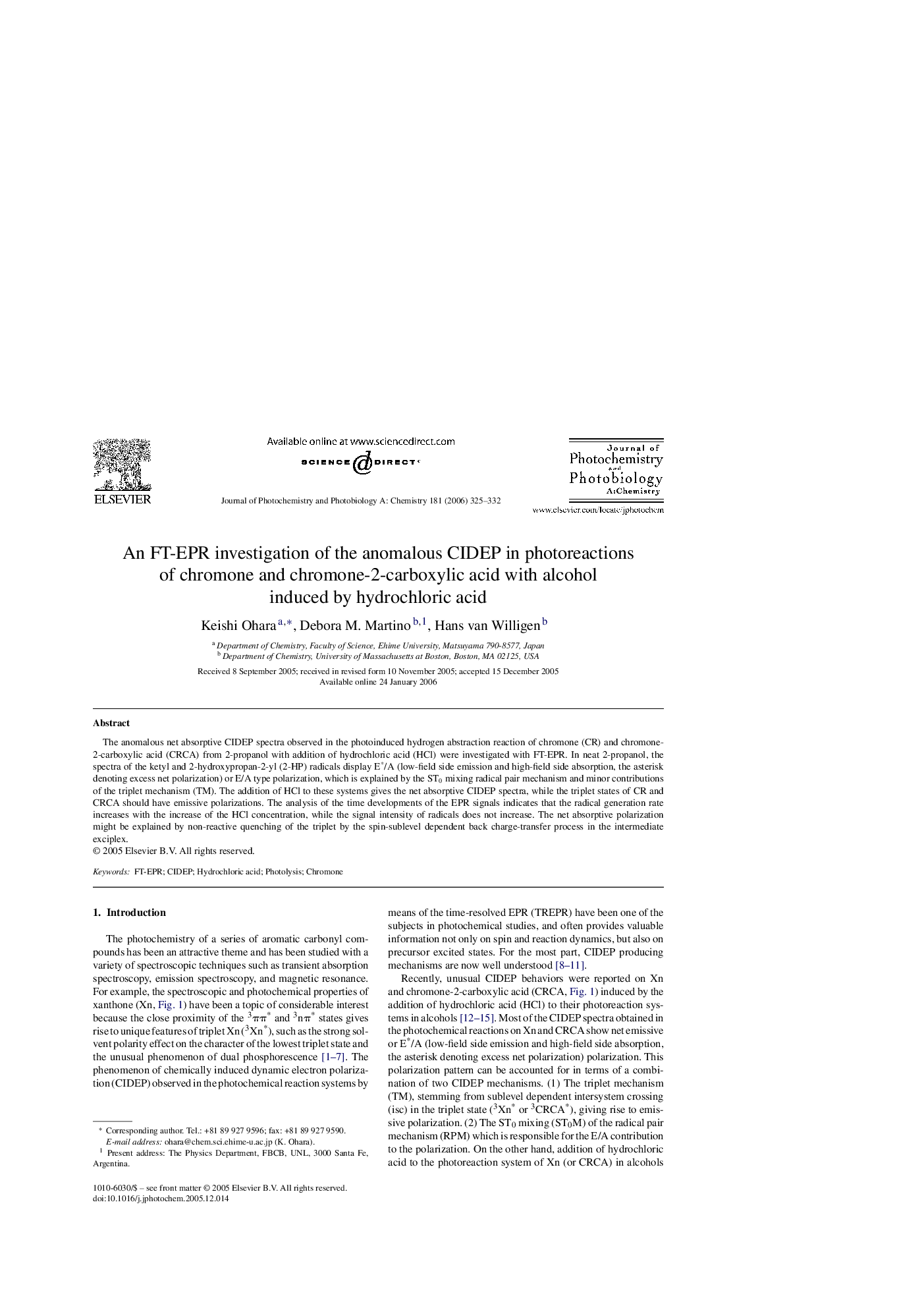| Article ID | Journal | Published Year | Pages | File Type |
|---|---|---|---|---|
| 28550 | Journal of Photochemistry and Photobiology A: Chemistry | 2006 | 8 Pages |
The anomalous net absorptive CIDEP spectra observed in the photoinduced hydrogen abstraction reaction of chromone (CR) and chromone-2-carboxylic acid (CRCA) from 2-propanol with addition of hydrochloric acid (HCl) were investigated with FT-EPR. In neat 2-propanol, the spectra of the ketyl and 2-hydroxypropan-2-yl (2-HP) radicals display E*/A (low-field side emission and high-field side absorption, the asterisk denoting excess net polarization) or E/A type polarization, which is explained by the ST0 mixing radical pair mechanism and minor contributions of the triplet mechanism (TM). The addition of HCl to these systems gives the net absorptive CIDEP spectra, while the triplet states of CR and CRCA should have emissive polarizations. The analysis of the time developments of the EPR signals indicates that the radical generation rate increases with the increase of the HCl concentration, while the signal intensity of radicals does not increase. The net absorptive polarization might be explained by non-reactive quenching of the triplet by the spin-sublevel dependent back charge-transfer process in the intermediate exciplex.
